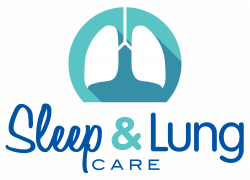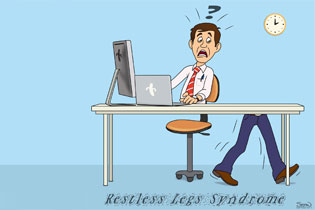Restless legs syndrome
What is restless legs syndrome?
Restless legs syndrome, or RLS for short, is a condition that causes strange sensations in your legs. RLS is also sometimes called “Willis-Ekbom disease.” If you have RLS, you probably have the urge to move your legs at night. This can make it hard to get comfortable and fall asleep.
In some cases, RLS happens on its own and seems to be passed on in families. In other cases, the condition seems to be linked to other medical problems. For instance, a condition called “anemia,” in which there is too little iron in the blood, seems to increase the risk of RLS. Other conditions that increase the risk of RLS include kidney disease, diabetes, and multiple sclerosis. Pregnancy seems to increase a woman’s risk of developing RLS, too.
What are the symptoms of RLS?
People who have RLS get an uncomfortable urge to move their legs when they are at rest. They describe the feeling as crawling, creeping, pulling, or itching. And they say the feeling is deep in the legs – not on the skin – usually below the knees. These symptoms usually get worse as the day moves on, and they are worst at night. The symptoms can be especially bad when trying to stay still to read a book, watch television, or fall asleep. But people can make the feeling go away temporarily if they walk around or move their legs. Some people with RLS find that their legs move on their own while they are asleep.
In short, the symptoms:
- Happen when you are at rest
- Go away if you move your legs on purpose
- Are worst at night
- Sometimes include the legs moving on their own during sleep
Together, the symptoms of RLS can make it hard to get a good night’s sleep. People with the condition often feel tired during the day.
Is there a test for RLS?
There is a test, but it is not usually necessary. Your doctor or nurse should be able to tell if you have it by asking about your symptoms and doing an exam. Still, it is possible that your doctor or nurse will decide to send you for a “sleep study,” to be sure of what is happening.
For a sleep study, you spend the night in a lab, and you are hooked up to different machines that monitor your movements, heart rate, breathing, and other body functions.
Is there anything I can do on my own to feel better?
Yes. You might feel better if you:
- Do activities that keep your mind alert during the day, such as crossword puzzles
- Get moderate regular exercise
- Massage your legs (or have someone massage them)
- Apply heat to your legs with heating pads or by taking a warm bath
- Avoid taking medicines that can make RLS worse – These include antihistamines
Should I see a doctor?
See your doctor or nurse if your condition bothers you, or if it keeps you from getting a good night’s sleep.
How is RLS treated?
Some people with RLS do not need medicine for it because they have mild symptoms that don’t bother them very often. If treatment is needed, there are several medicines doctors can suggest.
In people with RLS who also have a severe form of kidney disease called kidney failure, the RLS might improve with a treatment called hemodialysis (also known as just dialysis).
What if I am pregnant?
If you are pregnant, you can take iron supplements and try the other tips that do not involve taking prescription medicines. Most of the medicines used to treat RLS are not proven to be safe to take during pregnancy. If your symptoms are bad, there are some medicines that might be OK to take. But keep in mind that the condition usually goes away or gets much better after you give birth.

